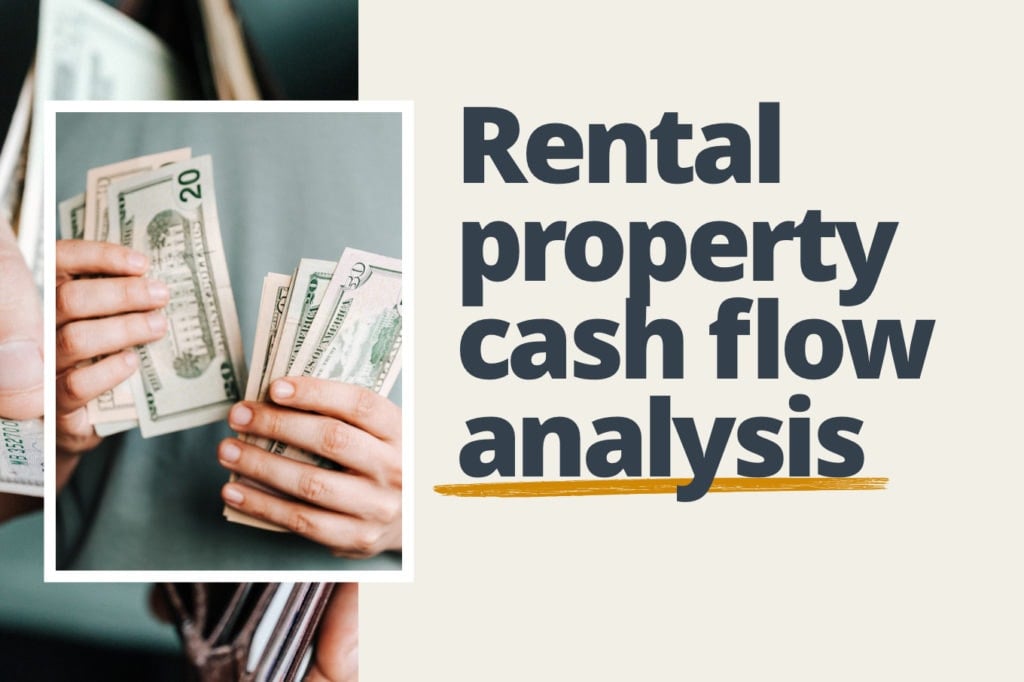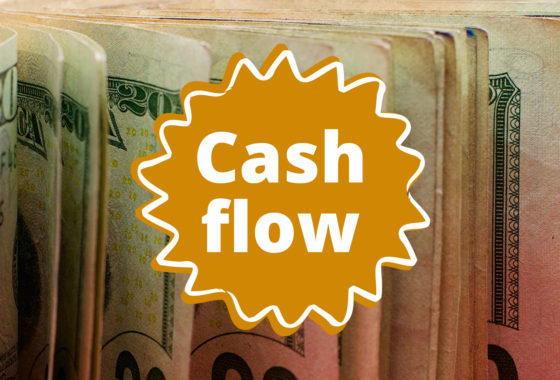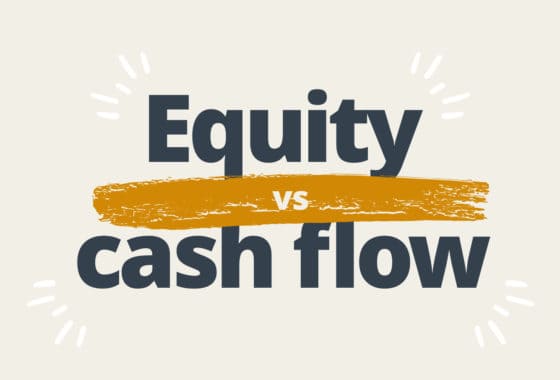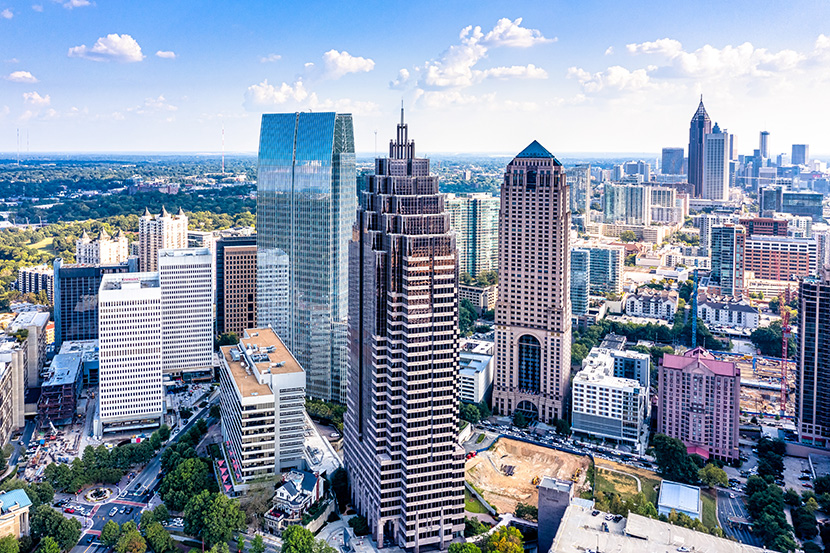Math is not most people’s favorite subject in school, but it is vital to real estate investing success. Understanding how your business makes money is imperative in helping it make more. Therefore, let’s focus on one of the most important aspects of real estate math: cash flow.
In layman’s terms, cash flow is the amount of income left in your business after all the bills have been paid. This amount is often expressed as a monthly dollar amount.
In the real estate rental business, cash flow is the income left after paying out expenses such as the mortgage, taxes, insurance, vacancies, repairs, capital expenditures, utilities, and any other expenses that affect the property.
To learn how to generate a positive cash flow, you need to ensure you’re doing an accurate rental property cash flow analysis.
What is “good” cash flow?
Aim for $100–$200 in cash flow per unit that you buy. For a duplex, you would want to make $200 at minimum. If it’s a fourplex, then $400 minimum. You want that to be cash flow leftover in your pocket after all the bills have been paid.
Now, we say that, but there’s a caveat there. It truly depends on how big the deal is, right? Think about it this way: If you were to invest $1 million into any investment and you’re making $100 a month, is that a good deal? It doesn’t sound like a terrific deal. But if you were to invest $500 and every single month you made $100, that’s the best investment in the world, right?
And so, the idea of cash flow per unit or cash flow per door is a great metric. But it’s only one metric that you can really go by. There’s another metric that we care a lot about: cash-on-cash return.
What is “good” cash-on-cash return?
Cash-on-cash returns are the percentage of your investment you make back on this year in cash flow. To do some basic math, if you invested $1,000 and you made back $100 in the whole year, that is a 10% return. Cash-on-cash return is how much money you made in profit in cash flow during the year divided by how much money you put into the deal.
So, going back to the question—is $100 or $200 monthly cash flow a good deal for a single-family house? Well, the real question is, “How much money did you put into it?” That answer is what makes all the difference.
Cash-on-cash example
Okay, here’s some basic math. If you were making $200 per month every month, that’s $2,400 a year. That amount divided by a $74,000 investment is 3.2%. Is 3.2% cash-on-cash return a good deal? Not really, no.
The minimum that you should generally aim for is between 10% and 12%. You really want to see it closer to 12%. Why did we pick that number? On average, the stock market has returned between 6% and 7% over the past hundred years. But you should want to get a lot better than that. So, 12% is the rule of thumb.
However, you can’t just rely on 12% because you’ve got to also look at the total amount of cash flow. And here’s why. If you invested $1 into a real estate deal and you made two bucks a year, is $2 a year in profit worth all the headache of putting into a real estate deal? Probably not, because you’re only getting $2 a year. But that’s a 200% cash-on-cash return… so, shouldn’t you do it? No, because it’s only two bucks.
That’s why you need to look at both numbers. You want a cash-on-cash return of a minimum of 12%. You might go slightly lower than that if you believe the market is doing really well appreciation-wise—like if property values will climb.
How to calculate cash flow
Cash flow might seem really easy to calculate, but honestly, many people get it wrong. At its core, it is, in fact, simple. To calculate cash flow, you subtract the expenses from the income:
Cash Flow = Total Income – Total Expenses.
Easy enough, right? Then why do so many people screw this up? The fact is that while the equation is simple enough, the items that make up the equation are loaded with complexity. Let’s take a look at both to understand better.
Calculating your total income
While the total income might be the same as the total rent, many times it won’t be. There may be other sources of income you need to account for, such as application fees, late fees, and laundry income, but we’ll discuss those later.
When analyzing a property for cash flow, it’s wise to list all possible sources of income—but be conservative. It’s best to err on the side of caution and assume you’ll be getting less than you actually hope to.
Once you’ve made a list of all your monthly sources of income, you need to work out some simple math calculations to figure out your net operating income (NOI), generated by your investment properties and the amount of your potential return on your investment, also known as cap rate.
Here are the simple NOI and cap rate formulas to follow:
Net Operating Income = Gross Rental Income – Operating Expenses
Capitalization (Cap) Rate = Net Operating Income / Current Market Value
The biggest thing to keep in mind with your investment property is that you want to do everything possible to increase cash flow. Even the little things can add up. Let’s take a look at potential expenses you need to factor into your investment.
Rental property expenses that may reduce cash flow
This is when things can get complicated. Most people can figure out the income, but one mistake can be the difference between incredible success and catastrophic failure when it comes to expenses. When dealing with rental properties, there are a lot of expenses you’ll encounter, such as:
- Repairs
- Mortgage payment
- Mortgage insurance (PMI or MIP)
- Vacancy rate
- Property taxes
- Utilities (water, sewer, trash, electric, propane, natural gas, etc.)
- Catastrophe insurance (flood, fire, earthquake, property hazard)
- New appliances
- General upkeep, landscaping, and property management
- HOA fees/dues
- Office supplies/software
- Gas/mileage
- Payroll
To further complicate things, not all expenses will occur each month, so it is often best to calculate a certain percentage for those expenses when planning for the future.
For example, you may not have any vacancies right now, but you might assume your property will be empty one month out of the year. Therefore, you will want to include 1/12th, or 8.3%, for your monthly vacancy expense.
Some expenses (like office supplies and gas) you may choose to ignore on individual houses. But if you are buying a larger multifamily investment property, you should include it because it does add up quickly.
You want to keep your expenses to a minimum, obviously, but what if you could factor in additional income? Let’s discuss several ways you can increase your cash flow.

Find financial freedom through rentals
If you’re considering using rental properties to build wealth, this book is a must-read. With nearly 400 pages of in-depth advice for building wealth through rental properties, The Book on Rental Property Investing imparts the practical and exciting strategies that investors use to build cash flow and wealth.
How to increase cash flow
You need to conduct a cash flow analysis. You always want your cash flow to be in the green. If you’re not making money on an investment, you contradict the entire point of investing in the first place. Here are a few ways you can tip the cash balance in your favor.
- Increase rents: The market changes over time. If your tenants have not had an increase in their rents for a while, make sure you check the current market rental rate so that you can stay competitive and bring in additional income.
- Maintain the property properly: By creating curb appeal, you increase your chances of attracting tenants, which means less vacancy time. Additionally, by maintaining the property, you increase the value of the purchase price for when you are ready to sell the investment.
- Look for long-term tenants: Check potential tenants’ rental history. Do they typically stay in one place for a long time? What made them leave their last rental home? Have they ever broken a lease agreement? These questions are essential for screening prospective tenants. The longer you can keep tenants in your rental units, the lower vacancy rates. Try to pick tenants with strong social ties to the community, a stable job, and children in the local schools. These factors typically mean a tenant is unwilling to pick up their roots and move elsewhere.
- Appeal your property taxes: Potentially, property taxes can increase each year while you cannot annually raise your rental charges. You then run into the problem of a decrease in cash flow. You can appeal the increase in taxes by the local government if it seems unjustified. Start by looking at comparable rental properties, then start the appeal process at the county assessor’s office.
- Refinance: Check with your lender and keep an eye on your mortgage interest rates. You may be able to lower your monthly mortgage rates, increasing your cash flow, if you observe falling interest rates and decide to refinance. Just be sure you factor in closing and lender fees.
The 50% rule
Another much quicker way to estimate cash flow is using a technique known as the 50% rule. This rule of thumb states that a rental property’s expenses tend to be about 50% of the income, not including the mortgage principal and interest (P&I) payment. The formula looks like this:
Cash Flow = (Total Income x .5) – Mortgage P&I
The 50% rule is a good tool to analyze a rental property quickly but should never take the place of a thorough analysis of a property. Think of the 50% rule as a “quick filter” that allows you to estimate cash flow in under a minute. This enables you to analyze dozens of properties while looking for a potential deal that you can run a more thorough analysis on later.
The BiggerPockets calculator
Finally, it would be a shame not to mention that you can crunch all these numbers using the BiggerPockets Rental Property Calculator. While you can easily use a spreadsheet or the back of a napkin, it’s helpful to use the online calculators to ensure your math is correct and that you’ve considered all the potential expenses.
By conducting a rental property cash flow analysis, you are scrutinizing the numbers and ensuring the success of what you set out to do with your real estate investment in the first place: make money.
More on cash flow from BiggerPockets
What is Cash Flow in Real Estate?
Cash flow is defined as how much rental income is left over after all expenses are paid on a rental property. Here’s how to calculate it.
Should You Invest for Equity or Cash Flow?
What should be the primary goal of a buy and hold real estate investor: equity or cash flow? Your primary focus will depend on your situation and goals. But for…
How to Achieve Steady Cash Flow on Your Remote Investment
Imagine receiving a $20,000 check to purchase a rental property, as well as step-by-step guidance from some of the most experienced real estate investors in the industry… Now watch what…
Note By BiggerPockets: These are opinions written by the author and do not necessarily represent the opinions of BiggerPockets.



